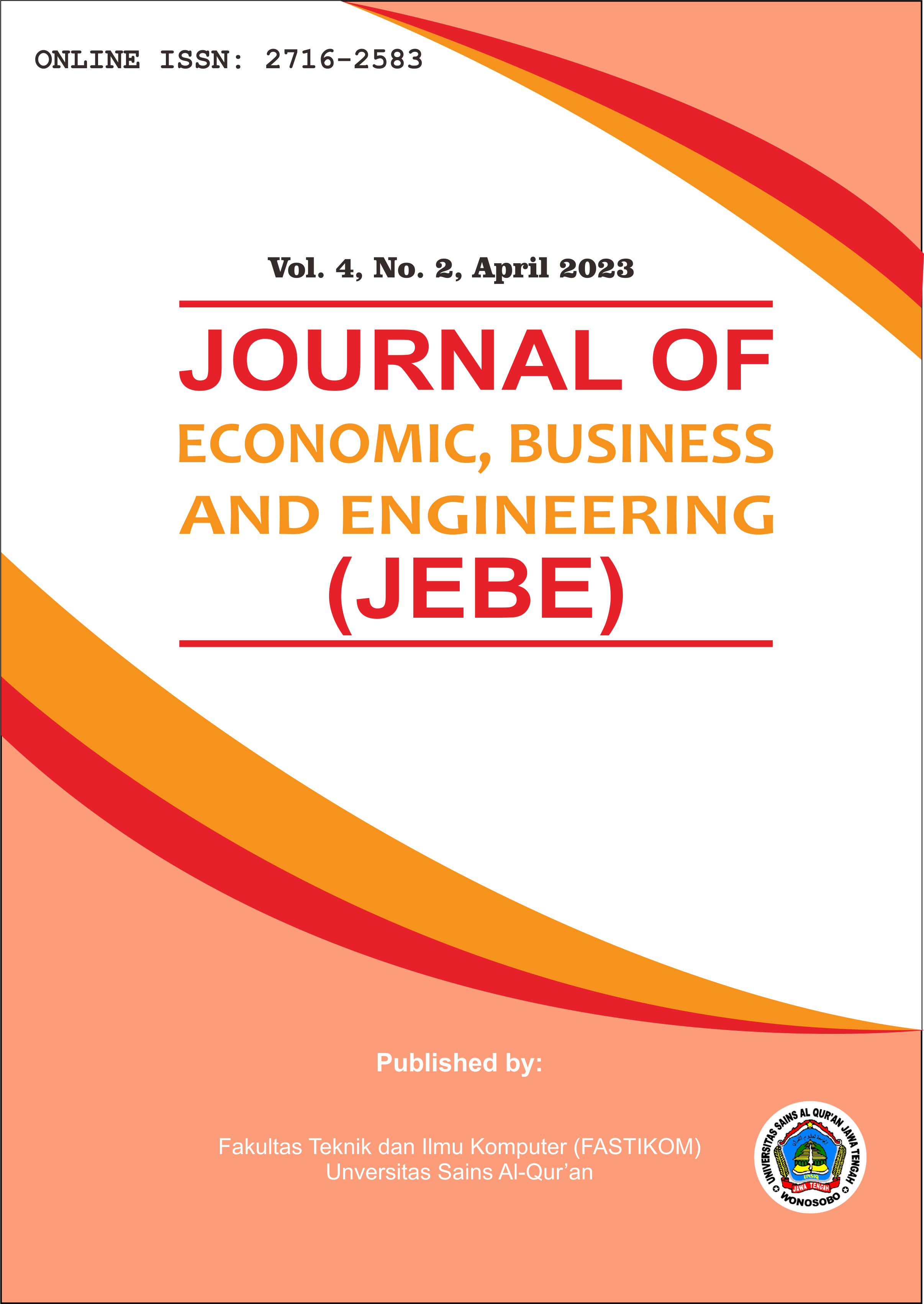ANALISA SINAR MATAHARI DAN ANGIN DALAM KINERJA TERMAL TIGA RUMAH TINGGAL
DOI:
https://doi.org/10.32500/jebe.v4i2.6316Keywords:
material dinding, elemen bangunan, ventilasi, selubung bangunanAbstract
Kenyamanan termal merupakan persepsi penghuni yang didasarkan pada lingkungannya, sedangkan kinerja termal adalah kinerja panas yang ditimbulkan oleh bangunan. Banyak faktor dalam kinerja termal bangunan diantaranya adalah sinar matahari dan angin. Kedua faktor termasuk faktor penting yang mempengaruhi kinerja termal bangunan untuk mewujudkan kenyamanan termal penghuni bangunan. Tujuan penelitian adalah menganalisa sinar matahari dan angin dalam mempengaruhi kinerja termal rumah tinggal. Metode penelitian menggunakan metode observasi dengan melakukan pengamatan elemen bangunan yang berhubungan dengan sinar matahari dan angin. Hasil pengamatan dideskripsikan untuk menemukan hasil kinerja termal dari tiga bangunan yang diteliti. Hasil penelitian menunjukkan bahwa elemen bangunan seperti material dinding mempengaruhi kinerja termal bangunan. Penelitian menunjukkan bahwa rumah tinggal dengan dinding plaster lebih dingin dibandingkan dengan rumah tinggal berdinding batu ekspos dan kayu.
References
Behzadi, A., & Sadrizadeh, S. (2023). A rule-based energy management strategy for a low-temperature solar/wind-driven heating system optimized by the machine learning-assisted grey wolf approach. Energy Conversion and Management, 277(September 2022), 116590. https://doi.org/10.1016/j.enconman.2022.116590
Hermawan, H., & Švajlenka, J. (2022). Building Envelope and the Outdoor Microclimate Variable of Vernacular Houses: Analysis on the Environmental Elements in Tropical Coastal and Mountain Areas of Indonesia. Sustainability, 14(3), 1818. https://doi.org/10.3390/su14031818
Li, Y., Arulnathan, V., Heidari, M. D., & Pelletier, N. (2022). Design considerations for net zero energy buildings for intensive, confined poultry production: A review of current insights, knowledge gaps, and future directions. Renewable and Sustainable Energy Reviews, 154. https://doi.org/10.1016/j.rser.2021.111874
Liu, K., Lian, Z., Dai, X., & Lai, D. (2022). Comparing the effects of sun and wind on outdoor thermal comfort: A case study based on longitudinal subject tests in cold climate region. Science of the Total Environment, 825, 154009. https://doi.org/10.1016/j.scitotenv.2022.154009
Rani, S., & Kannamma. (2022). Can building orientation perturb micro-climatic conditions inside classrooms located in hot-humid climatic condition? Energy and Built Environment, 3(4), 467–477. https://doi.org/10.1016/j.enbenv.2021.05.003
Sakharov, I., Kudryavtsev, S., Paramonov, V., Shuvaev, A., & Sokolova, N. (2022). Ensuring the operational suitability of buildings, railways and bridges in of the Arctic zone in conditions of global warming. Transportation Research Procedia, 63, 2506–2514. https://doi.org/10.1016/j.trpro.2022.06.288
Satola, D., Wiberg, A. H., Singh, M., Babu, S., James, B., Dixit, M., Sharston, R., Grynberg, Y., & Gustavsen, A. (2022). Comparative review of international approaches to net-zero buildings: Knowledge-sharing initiative to develop design strategies for greenhouse gas emissions reduction. Energy for Sustainable Development, 71, 291–306. https://doi.org/10.1016/j.esd.2022.10.005
Singh Rajput, K., & Bartaria, V. N. (2022). Experimental study of vertical air temperature distribution and ventilation with energy saving using solar chimney. Materials Today: Proceedings, 63, 692–698. https://doi.org/10.1016/j.matpr.2022.04.914
Sugini, Mufida, E., & Risdiyano. (2021). Potential of sloped solar chimney for the architectural development of sustainable applied technology models for passive air ventilation. Journal of Design and Built Environment, 21(1), 13–20. https://doi.org/10.22452/jdbe.vol21no1.2
Zhang, R., Liu, D., & Shi, L. (2022). Thermal-comfort optimization design method for semi-outdoor stadium using machine learning. Building and Environment, 215(March), 108890. https://doi.org/10.1016/j.buildenv.2022.108890







